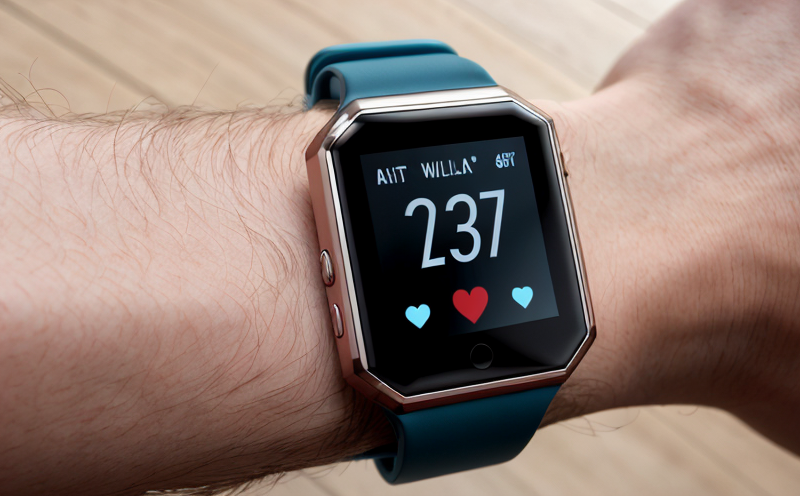3GPP Cellular Connectivity Testing for Wearable Health Devices
The proliferation of wearable health devices has brought about a new era in medical technology. These devices are designed to monitor and transmit various health metrics, offering patients insights into their well-being while providing healthcare providers with valuable data. However, the integration of these devices into everyday life necessitates rigorous testing to ensure they meet stringent standards for reliability, security, and performance.
Among the key challenges faced by manufacturers is ensuring that wearable health devices comply with 3GPP (3rd Generation Partnership Project) standards for cellular connectivity. This involves a series of tests designed to evaluate how well these devices can communicate over cellular networks, ensuring seamless data transmission and reception. The testing process ensures not only the functionality but also the security of sensitive personal health information.
The first step in this process is understanding the 3GPP standards themselves. These standards define the protocols for wireless communication, including both hardware and software requirements. For wearable devices, compliance with these standards ensures interoperability across different networks, which is crucial for a device to work effectively anywhere it is used.
Testing typically begins with signal strength analysis, where engineers assess how well signals are received by the device within various environments. This includes urban areas with dense buildings and rural settings where connectivity can be spotty. The goal here is to ensure that even in less-than-ideal conditions, the device maintains a strong enough connection to send data securely.
Another critical aspect of testing involves latency measurements. Latency refers to the time it takes for a signal to travel from one point to another and back again. In real-world applications, low-latency communication is essential for timely delivery of health data, which can be crucial in emergency situations. By measuring latency under various conditions, engineers can identify potential bottlenecks or areas where improvements are needed.
Security testing forms a significant part of the 3GPP cellular connectivity tests for wearable devices. Given the sensitive nature of health data, it is imperative that these devices are protected against unauthorized access and data breaches. Testing includes evaluating encryption methods used to secure transmissions, as well as assessing the robustness of authentication processes.
Once initial tests have been conducted, further testing may involve simulating real-world scenarios. For instance, engineers might test how a device performs during physical exertion or when exposed to environmental factors such as humidity and temperature variations. These tests help ensure that the device continues to function correctly even under challenging conditions.
The results of these tests are then meticulously analyzed, and any issues identified are addressed through iterative design improvements. This process ensures not only compliance with 3GPP standards but also enhances the overall quality and reliability of wearable health devices. Compliance with such rigorous testing protocols is critical for gaining market acceptance and ensuring consumer trust.
Given the complexity involved in these tests, it is essential to work with a laboratory that has extensive experience in this domain. Our team at [Laboratory Name] brings together expertise in cellular communication technologies along with deep knowledge of medical device regulations. We leverage state-of-the-art equipment and cutting-edge methodologies to provide comprehensive testing solutions tailored specifically for wearable health devices.
Applied Standards
The tests conducted during 3GPP cellular connectivity testing are based on international standards such as those provided by ISO, IEC, and the relevant sections of 3GPP itself. These standards ensure that all aspects of cellular communication - from signal strength to security measures - meet industry-wide benchmarks.
For instance, ISO/IEC 27001 provides guidelines for information security management systems, which are crucial when dealing with sensitive health data. Similarly, the requirements outlined in 3GPP TS (Technical Specification) series documents provide detailed instructions on how to implement and test various aspects of cellular connectivity.
By adhering strictly to these standards, manufacturers can be assured that their products will not only perform well but also comply with regulatory expectations globally. This adherence helps build consumer confidence while facilitating smoother market entry processes in different countries.
Quality and Reliability Assurance
The quality and reliability assurance process plays a pivotal role in ensuring that wearable health devices meet the highest standards of performance and safety. At [Laboratory Name], we employ rigorous methodologies to assess every aspect of a device's functionality, from its core components to its integration into real-world environments.
A key component of this process is continuous monitoring during various stages of product development and manufacturing. By tracking each step meticulously, potential issues can be identified early on, allowing for prompt corrective actions. This proactive approach helps maintain the integrity of the final product throughout its lifecycle.
Additionally, we conduct thorough validation tests to confirm that all features operate as intended under specified conditions. These tests simulate normal usage patterns and stress scenarios to ensure durability and reliability even in demanding situations. Such rigorous testing ensures that consumers receive products they can trust for long-term use without compromising on quality or safety standards.
International Acceptance and Recognition
Compliance with 3GPP cellular connectivity testing is not just important domestically but also internationally. Many countries have adopted these standards as part of their regulatory frameworks to ensure interoperability among devices operating within their borders. By adhering to these globally recognized protocols, manufacturers gain broader market access opportunities.
The acceptance of such tests extends beyond mere compliance; it also fosters trust and credibility among consumers who know that their devices meet the highest international standards. This recognition enhances brand reputation and customer satisfaction, contributing significantly to long-term success in the healthcare technology sector.
Moreover, participating in these rigorous testing processes can lead to certification from reputable bodies like Underwriters Laboratories (UL) or conformity assessment bodies accredited by recognized organizations such as ISO/IEC. These certifications serve as powerful endorsements indicating adherence to best practices and quality assurance measures.





